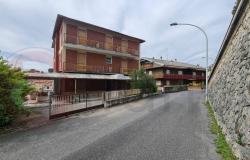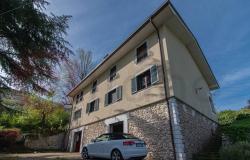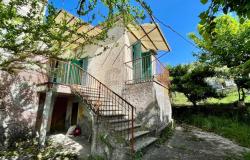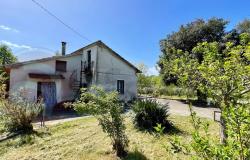useful info
Submitted by sprostoni on Tue, 09/04/2012 - 02:02In reply to A newbie all over again! by Annec
I recall 'Raggio' (not heard of for a while ?) helping with this about 18 months ago, shows the usefulness of this site! I am not sure what the law is if the growth is already there when you purchase the land ? Whoever wishes to plant trees on the boundary of their property must respect the distances established by the rules and regulations and, lacking these, local custom. If neither of these exists, the following distances from the boundary must be respected: 3 metres for tall trees. Tall trees are those trees whose trunks either simple or branched, grow high, e.g. walnuts, chestnuts, oaks, pine trees, cypresses, elms, poplars, plane trees and the like; 1.5m for smaller trees. These are considered to be those trees which, when fully grown, do not exceed 3 metres; Half a metre for vines, bushes, growing hedges, fruit trees no taller than 2.5 metres. However, the distance must be a metre if the hedges are alder, chestnut or similar trees which are regularly pruned close to the stump, and two metres in the case of robinia hedges. The distance is measured from the boundary line to the base of the tree trunk at the time of planting or from the boundary line to the sowing drill. These measurements do not need to be respected if there is a dividing wall, belonging to the owner or shared, as long as the plants are kept to a height below the top of wall. Articolo 892. Chi vuol piantare alberi presso il confine deve osservare le distanze stabilite dai regolamenti e, in mancanza, dagli usi locali. Se gli uni e gli altri non dispongono, devono essere osservate le seguenti distanze dal confine: l) tre metri per gli alberi di alto fusto. Rispetto alle distanze, si considerano alberi di alto fusto quelli il cui fusto, semplice o diviso in rami, sorge ad altezza notevole, come sono i noci, i castagni, le querce, i pini, i cipressi, gli olmi, i pioppi, i platani e simili; 2) un metro e mezzo per gli alberi di non alto fusto. Sono reputati tali quelli il cui fusto, sorto ad altezza non superiore a tre metri, si diffonde in rami; 3) mezzo metro per le viti, gli arbusti, le siepi vive, le piante da frutto di altezza non maggiore di due metri e mezzo. La distanza deve essere però di un metro, qualora le siepi siano di ontano, di castagno o di altre piante simili che si recidono periodicamente vicino al ceppo, e di due metri per le siepi di robinie. La distanza si misura dalla linea del confine alla base esterna del tronco dell’albero nel tempo della piantagione, o dalla linea stessa al luogo dove fu fatta la semina. Le distanze anzidette non si devono osservare se sul confine esiste un muro divisorio, proprio o comune, purché le piante siano tenute ad altezza che non ecceda la sommità del muro
Use full info
Submitted by david.it48 on Tue, 09/04/2012 - 04:44In reply to A newbie all over again! by Annec








